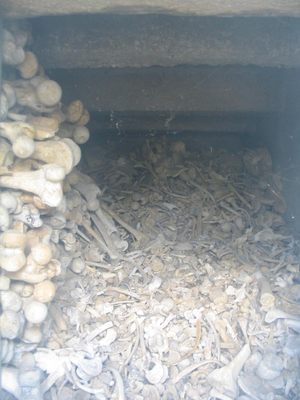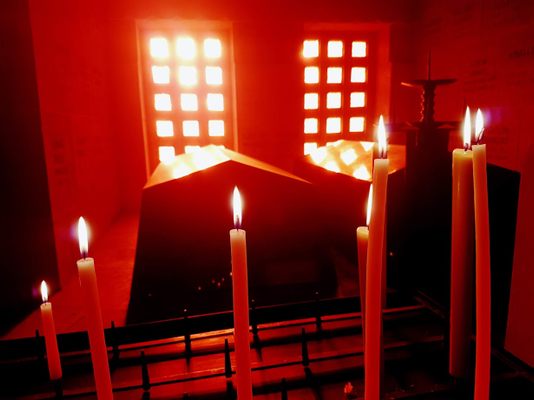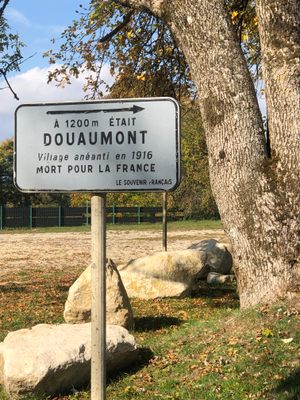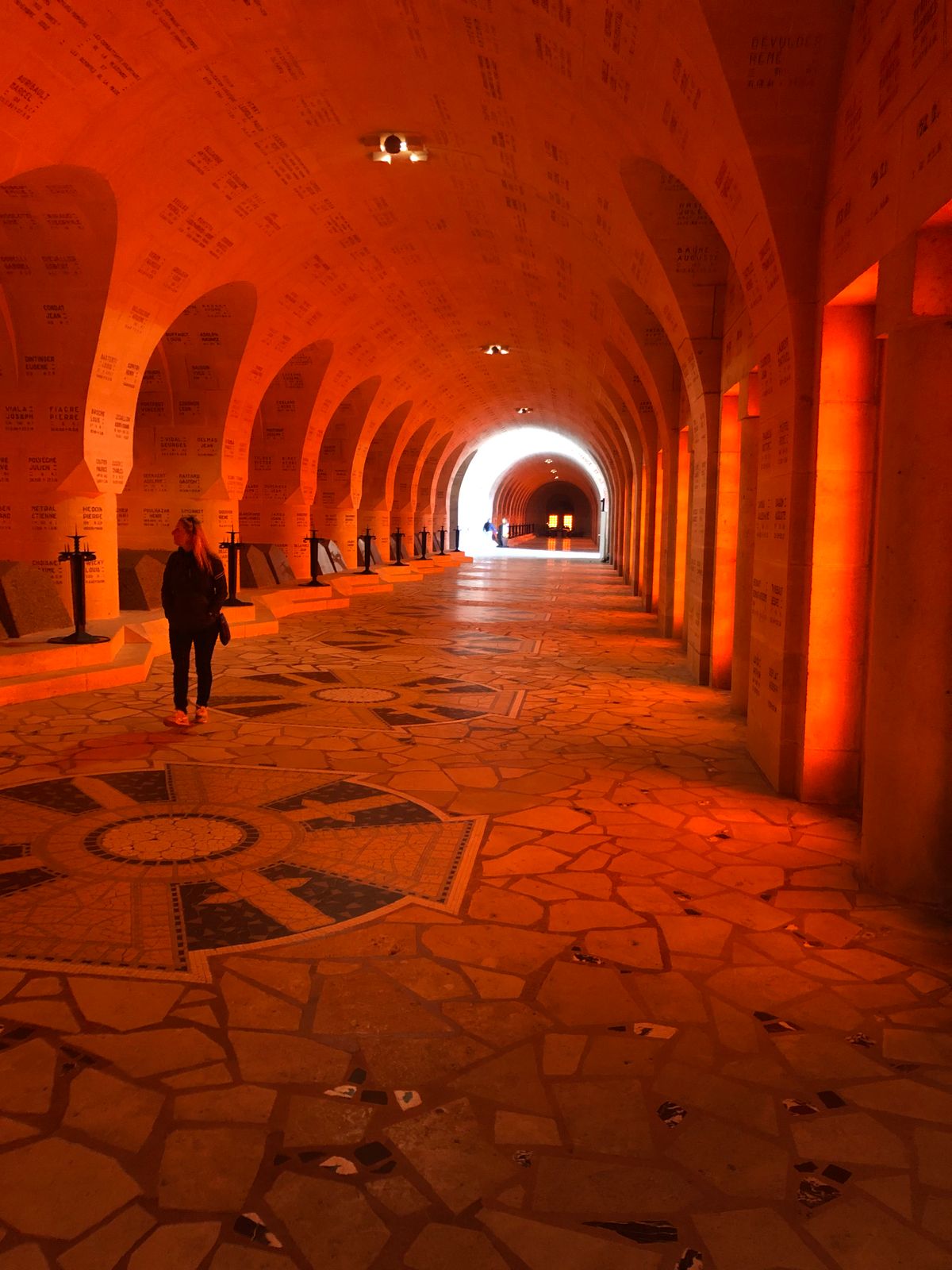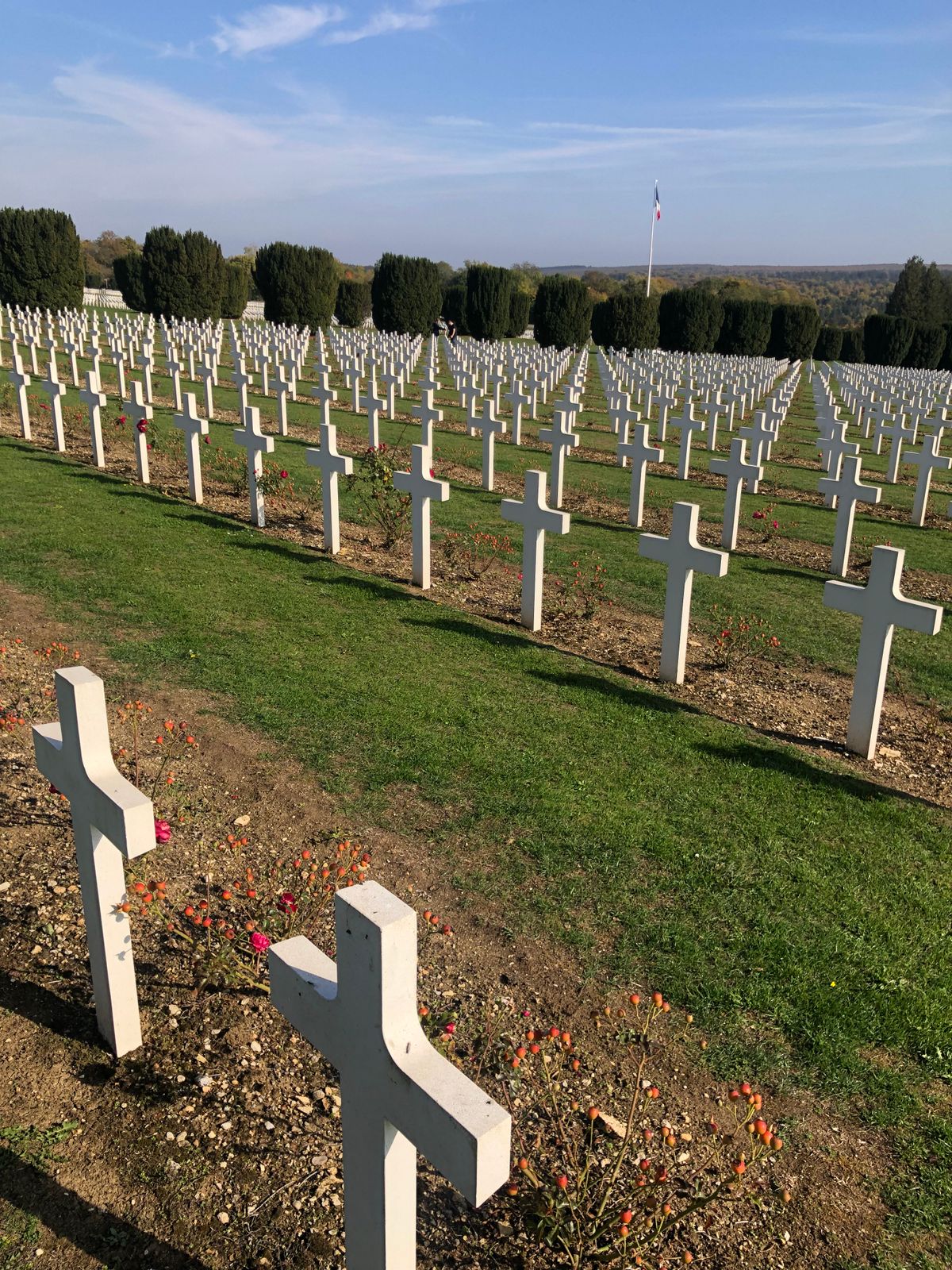About
In an area of less than 20 square kilometers, an area roughly half the size of Manhattan, there were 700,000 casualties and some 230,000 men died during the nearly year long battle of Verdun in WWI.
Warfare on this scale, with such a machine efficiency of killing was new, WWI being the first industrialized war. As new war machines like the machine gun, poisonous gas, and thousands of rounds of artillery ammunition were introduced to the battlefield the death toll rose accordingly (8,500,000 military dead) and of course so did the number of bodies left over.
Inaugurated on 7 August 1932 by French President Albert Lebrun, this house of death sits opposite a cemetery, and contains a death bell, tolled at official ceremonies, and a death lantern which shines out across the cemetery.
Interestingly, unlike the neatly stacked piles in the Catacombs or in Church ossuaries, the bones of the dead soldiers are simply in heaping piles, which strangely feels more appropriate for the violent and tragic way they died, and helps illustrate the sheer scale of death during WWI. The windows of the ossuary peer in on pile after pile of bones, which you can walk amongst, with piles of bones divided up by the region in the 20 square kilometer Verdun area where they were found. Engraved bricks each bear a soldier's name, though there is by no means a brick for every soldier, and tens of thousands of these soldiers go nameless.
The first floor of the ossuary building has a war-museum with 3D-photos -- of which many were taken during WWI -- relics and remains of destroyed villages, and weapons from the war.
Related Tags
Community Contributors
Published
October 28, 2009


